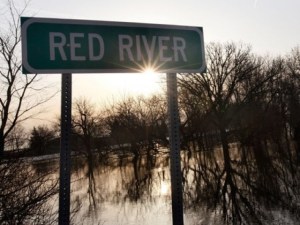Guest Post: Fargo Diversion Is Redistribution Of Wealth

“Redistribution of wealth.”
Few phrases provoke a bigger response from either side of America’s political divide. For some, the words conjure up the social safety net, student loans and Medicare. Others see it as socialized theft, taking from people who have worked their way to success, only to give it to the indolent.
Most everyone would agree that some redistribution is necessary, such as using tax money to support disabled combat veterans. Likewise, almost everyone bristles at the thought of using tax subsidies to line the pockets of the rich and powerful. Bonuses for bailed out bank executives and Alaska’s “bridge to nowhere” are two examples that come to mind.
The “bridge to nowhere,” made infamous during the 2008 presidential election, would have linked a small Alaskan town to Gravina Island, a community populated by 50 people and an airport. The cost to federal taxpayers would have been $320 million. The primary purpose of the bridge was to promote commercial development of the island. Ultimately, the attempts by an Alaskan Senator to obtain this money by earmark failed. The project represented a huge “redistribution,” using hundreds of millions of tax dollars to subsidize an unnecessary project that did little more than enrich private developers on Gravina Island.
Fargo leaders insist on a huge dam and diversion for the protection of Fargo. But Moorhead is currently protected to 44 feet and Fargo will soon be protected to 42.5 feet. The FM area will be protected to nearly the 500-year FEMA level without the diversion project. The documents and materials published by the U.S. Army Corps of Engineers point to a different justification: Subsidizing the future private development of an expanded urban area south of Fargo.
Proponents of the dam and diversion employed an elaborate formula for calculating the “flood risk” and “benefit cost ratio” to artificially bolster the benefits of the project. The key to this analysis is the estimated cost savings “per acre” for future development of 14,000 acres currently in the flood plain. The materials provide: “Much of the area available for future growth is within the 100-year flood plain and future development with a diversion project in place would benefit from the saving of flood proofing costs in those areas removed from the flood plain.
As expected, the larger the diversion project, the larger the area removed from the 100-year floodplain and the larger the expected annual flood proof costs savings.” (FM Metropolitan Area Flood Risk Management FEIS, July 2011). According to the Army Corps, these flood proofing costs can reach $30,000 per acre, and therefore the project would reduce the costs of development by the same amount.
Currently, the projected taxpayer cost for the diversion is $2 billion. If Fargo will be protected from floods up to 42.5 feet without the diversion, who benefits?
Answer: Private land developers.
Who pays?
Answer: The taxpayers and the rural communities currently located in the 50,000-acre reservoir that will be required to surrender their property for the project.
Like the “bridge to nowhere,” Fargo’s unnecessary overpriced dam/diversion plan is a massive “redistribution of wealth” for the benefit of private development interests.







